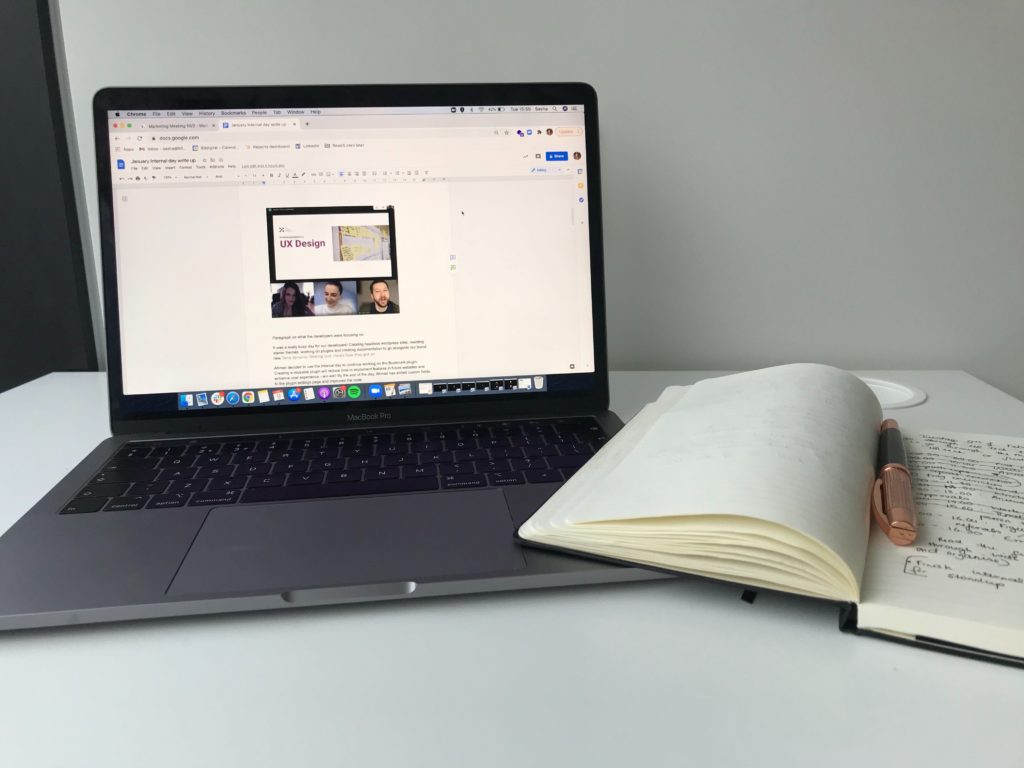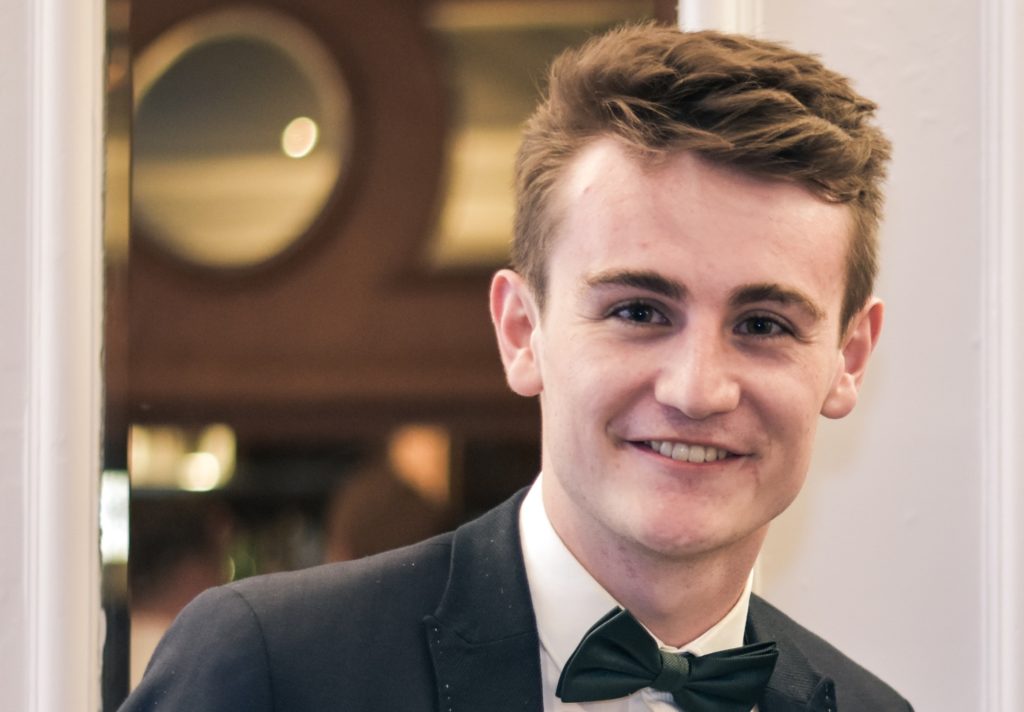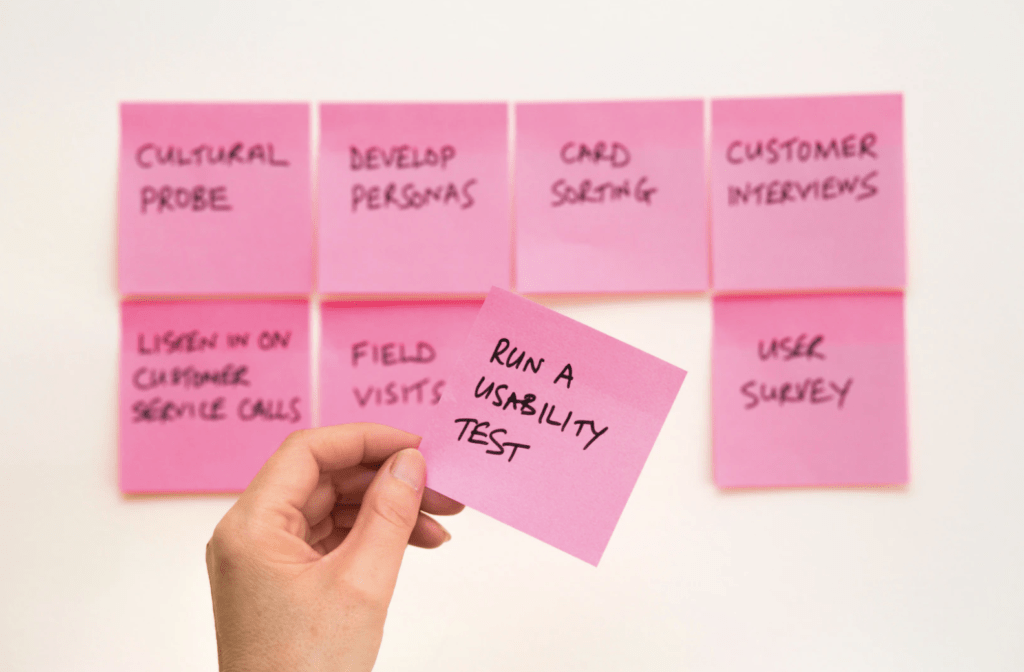Internal day: January 2021

If you tried to get in touch with our Project Manager Roz last Friday, you’re likely to have received a short ‘out of office’ message referring to an internal training day. That’s because, once a month for a full day, Roz alongside the whole of the ClarityDX team stop working on client projects and focus on improving internal processes instead. This helps us to become more efficient in how we do things at ClarityDX, saving time and money for our clients as a result.
So, as most of the UK got covered in snow, we buckled down for our remote internal training day, here’s what the ClarityDX team got up to:
UX & Designers
Recently, Charlie undertook a design course, so for the January internal day, Charlie delivered a presentation for the wider design team to share what he learnt, and discuss how our internal processes can be improved.
It’s great for our teams to get together and share learnings as a group, while discussing new ideas that can be incorporated into the design workflow, to ensure processes and output are always improved.
Charlies presentation resulted in new ideas generated on how the design team can work together on future projects and present complex findings to clients in a way that can be easily understood and digested.
Charlie and Fenella also used the day to work on our own internal design brief set by FINITE – our community for ambitious B2B marketers in tech, SaaS and software. FINITE is looking to host their annual conference on B2B tech marketing trends, so the design team worked on developing logos to create a variety of outcomes. First, sharing the ideas for the logo and other design assets within the design team and then, passing on their ideas for more internal reviews to select the final logo.
Developers
It was a really busy day for our developers! Creating headless WordPress sites, rewriting starter themes, working on plugins and creating documentation to go alongside our brand new Terra dynamic filtering tool.
Here’s how they got on:
Ahmad decided to use the internal day to continue working on the Bookmark plugin. Creating a reusable plugin will reduce time to implement the feature in future websites and enhance user experience – win win! By the end of the day, Ahmad has added custom fields to the plugin settings page and improved the code.
Jafar focused on working with React, Gatsby JS and WordPress to create a Headless WordPress site as this is one of his key personal development goals for the year.
Senior developers have talked about the benefits of Headless WordPress such as better security and performance, so being able to create a headless WordPress site will be a great service to provide for our clients. By the end, Jafar got started on building a side project, aim to have it done by (hopefully!) middle or the end of March – good luck!
As always, the day was super busy for our Lead Developer Matt. He choose to use the day to get our new Starter Theme into motion, planning out the file structure and the contents with Andrew. The current Starter Theme, which is the boilerplate for all sites we build, contains a lot of legacy code and has been due a freshen up. This is something both Andrew and Matt will be tag-teaming, with Andrew sorting out the front end assets and Matt doing the back end.
The new Starter Theme should improve the general productivity of the development team by decreasing build times as there will be more useful, reusable modules and features. It will also help with the maintainability of these new sites using the theme.
By the end of the day, the base template for the new Starter Theme has been created and Matt has started building out the core back-end files, with Andrew focusing on the build process for resources such as the theme JavaScript, CSS and custom-build Gutenberg blocks. Work will continue over the next month or two until it is ready to be used in production.
Matt also decided to start creating a boilerplate config file for the Civic cookie widget which ClarityDX will start offering by default with all new builds. This is particularly key at the moment because of the importance of having a clear and defined cookie consent widget on every site. We felt that this is something we should be offering as standard, allowing us to have a clear, outlined approach to cookie consent as well as the wider subject of privacy. By the end of the day Matt had created a base config file for Civic and started testing. The aim is to weave this into the new Starter Theme once it is complete.
Andrew set out a big goal for the day: to completely rewrite ClarityDX’s starter theme (stella) renamed ‘Luna’. Although the starter theme gets updated on a regular basis, it still uses older packages and build processes that over time have slowed development down. As mentioned above, Andrew will focus on the front-end while Matt will develop the back end.
Going forward this means that we can be sure our clients are receiving the very best websites, using the very latest technologies and processes. It also aids the development team by introducing new rulesets that will help code consistency as well as providing tools to increase productivity – great!
By the end of the day, a number of key milestones were achieved by Andrew:
- Andrew introduced new rulesets for JavaScript and CSS production
- Rewritten folder structure as well as introduced new Gutenberg templates for core and ACF block development
- Rewritten build and development scripts to improve code output
- Introduce new Gutenberg development best practice to reduce reliance on third-party resources such as ACF
Mujeeb used the day to implement unit testing for PHP using PHPUnit and run some test case scenarios. He also focused on looking to identify how PHPUnit can be used with WordPress Lifecycle i.e., how can a test interact with WordPress native hooks such as pre_get_post.
This was a focus for Mujeeb because recently he’s been involved in projects which have a higher complexity due to the number of components and developers who previously worked on the site. There is a danger that a new piece of work for such projects can be more complicated as it can break other components of the site. Regardless of how careful one is, if the number of components are too many, it becomes near impossible to test everything manually.
This is because the relationship between software testing and likelihood of breaking the site after deployment of a feature can be seen as inversely proportional. Since we cannot traverse all possible scenarios manually, automated testing ensures that a wide variety of scenarios are covered, thus making the solution more robust for our clients.
Mujeeb discovered that PHPUnit can be configured with WordPress Command Line Interface (WP-CLI) and that CLI can be used for simulation of complex scenarios such as parameterising a Query.
Mujeeb also discovered that WordPress comes with an official Library called WP_UnitTestCase which makes it easier to create, read, update and delete posts which can be further used in simulating a specific scenario. Great!
Vic used the day to write up documentation for the Terra dynamic filtering tool he’s been working on, as the tool has now been tested and implemented on a live project. As a reminder, Terra is a rewrite of our Lama tool which is used on almost every project, the new tool (and therefore it’s documentation) will allow us to implement dynamic filtering for sites much quicker and easier. This cuts down on development time and to an extent allows the project and content managers to utilise it (rather than always relying on the devs).
The documentation will ensure that the development team know how to use it and customise it. There are quite a lot of moving parts to it so the documentation needs to be clear and thorough. The tool can also be used by the wider ClarityDX team and potentially clients.
Vic got most of the documentation written up, maybe another hour or so and it will be good to go!
Digital strategy
Our in-house SEO strategist Dan wanted to look at further expanding ClarityDX and Clarity Performance’s expertise when it comes to internationalisation. This included optimising our new multilingual WordPress agency page as well as looking into the best working practices for international SEO and PPC marketing.
While English is the most widely spoken language, it’s still only spoken by around 20% of the world’s population. We need to make sure that our clients – many of whom are global businesses – are reaching as much of their target audience as possible online.
The ability to have a truly international website and online presence is an increasing priority for our current and prospective clients. This will allow us to ensure that ClarityDX is leading the way when it comes to creating globally optimised websites as well as efficiently targeting international markets.
By the end of the day Dan conducted keyword research and created SEO recommendations for the multilingual WordPress agency page. Dan also gathered some exciting ideas with regards to improving our international SEO and PPC service offerings.
Jodi decided to use the day to discover the best practices and strategies to be successful in our awards submissions this year, as this will allow us to showcase the ClarityDX team, and the exciting projects that they have been able to deliver this year. The day ended for Jodi with a clear strategy and outline going forward.
Project Managers
Ellie decided to write a blog post to assist our clients on how to better test their websites as part of their UAT process, as this is a common question Ellie is asked. In particular, clients look at how they can effectively and efficiently test their website, so Ellie is using the blog post as a great opportunity to put together a guide on this.
For the future this means that when Ellie or anyone else in the company are asked for tips on UAT we will be able to direct them to the blog post which they can reference as they go through the process.
Roz, decided to focus on improving clarity around launch processes and create a template for future launches which cover all bases. All the project managers also had some project management wide conversations about workflow and other PM processes with an eye on future improvements.
Launches are probably the tensest period of any website process – so the lead up to them, and the day of them can be high pressure. We wanted to create a solid boilerplate for the process in order to ensure that future launches are as seamless as possible. By clearly defining actions and responsibilities between us/our clients it will allow us to more confidently approach our next launch.
This will impact clients’ projects in the future by aiming to give them a simple breakdown of the process and hopefully provide a broader launch process, clearer timetables for launch and improved confidence in the process.
Currently, we’ve got a refreshed checklist which covers broader eventualities and the beginnings of a launch questionnaire to ensure we know everything we need, client-side. Further documentation is going to follow in future training days!

Meet the team: Dan M

A guide to website User Acceptance Testing (UAT)
Let's Talk
Do you have a web design and build project coming up that you would like to talk about?